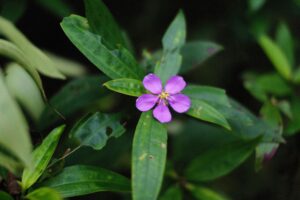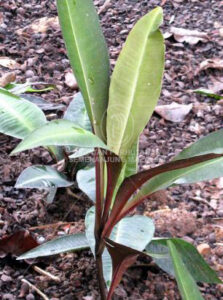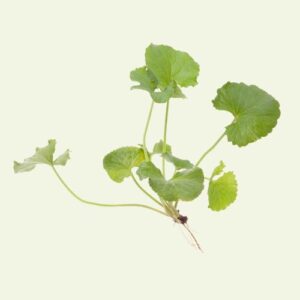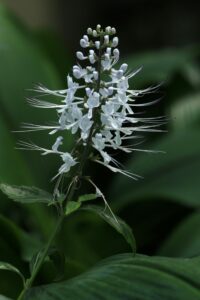Exploring Malaysia’s Herbal Treasures
Exploring Malaysia’s Herbal Treasures: Senduduk, Tongkat Ali, and More
Unearthing the ancient botanicals shaping modern wellness and skincare. Malaysia’s lush rainforests and tropical landscapes are more than just ecological marvels—they’re also home to a diverse pharmacy of botanical treasures. For centuries, local communities have turned to these natural remedies for healing, beauty, and vitality. Today, many of these traditional herbs are gaining renewed interest in modern formulations, both in wellness and skincare.
In this article, we dive into five of Malaysia’s most treasured herbs—examining their cultural relevance, therapeutic properties, and modern applications.
1. Senduduk (Melastoma malabathricum)

Traditional Uses:
Used in traditional Malay medicine for wounds, skin inflammation, and menstrual discomfort. The leaves are often crushed and applied to cuts or brewed into herbal infusions.
Key Benefits:
- Rich in flavonoids and antioxidants
- Anti-inflammatory and antimicrobial
- Supports skin regeneration and reduces redness
Modern Applications:
Senduduk extract is now being explored as a natural active in skincare products targeting acne, irritation, and sensitive skin—thanks to its soothing, healing profile.
2. Tongkat Ali (Eurycoma longifolia)

Traditional Uses:
Often called Malaysia’s Ginseng, Tongkat Ali is a well-known tonic in Malay and Orang Asli traditions, primarily used to boost male virility and overall vitality.
Key Benefits:
- Adaptogenic and energy-boosting
- Anti-inflammatory and antioxidant-rich
- May support hormonal balance and mood
Modern Applications:
Beyond supplements, Tongkat Ali is being studied for its anti-aging and skin resilience benefits, potentially supporting collagen production and reducing oxidative stress in skin cells.
3. Kacip Fatimah (Labisia pumila)

Traditional Uses:
Traditionally used by women for reproductive and hormonal health, especially in postnatal recovery. Commonly consumed as decoctions or herbal tonics.
Key Benefits:
- Phytoestrogenic properties
- Astringent and antioxidant effects
- Supports intimate wellness and skin firmness
Modern Applications:
Found in intimate care products and feminine hygiene formulations, Kacip Fatimah helps tone and balance the skin, particularly in sensitive areas.
4. Pegaga (Centella asiatica)

Traditional Uses:
Consumed as ulam (raw herbal salad) or used topically for wound healing and skin issues.
Key Benefits:
- Boosts collagen synthesis
- Reduces inflammation and promotes skin repair
- Enhances microcirculation
Modern Applications:
Pegaga is a global superstar in K-beauty and clean beauty, featured in creams, serums, and toners for calming, hydrating, and repairing stressed skin.
5. Misai Kucing (Orthosiphon stamineus)

Traditional Uses:
Popular as a diuretic and detox herb, often brewed into herbal teas for kidney and urinary tract health.
Key Benefits:
- Antioxidant and anti-inflammatory
- Detoxifying properties
- Supports metabolic and skin-clearing functions
Modern Applications:
Misai Kucing is being included in detoxifying wellness teas, body care, and even anti-acne skincare, thanks to its purifying qualities.
Bridging Tradition and Science
What sets these herbs apart isn’t just folklore—it’s science catching up with tradition. Many of these botanicals are now the subject of clinical research, validating their bioactive compounds and therapeutic potential. For the natural beauty and wellness industries, Malaysia offers a biodiverse advantage that is still largely untapped.
Tropical Bioessence: Sourcing Malaysia’s Best
At Tropical Bioessence, we specialize in the extraction and standardization of Malaysian botanical actives, offering both single-herb extracts and custom blends. Our ingredients are backed by tradition, crafted with care, and validated for modern applications.
→ Looking to formulate with Malaysia’s botanical gems? [Contact us] to explore your next product innovation.